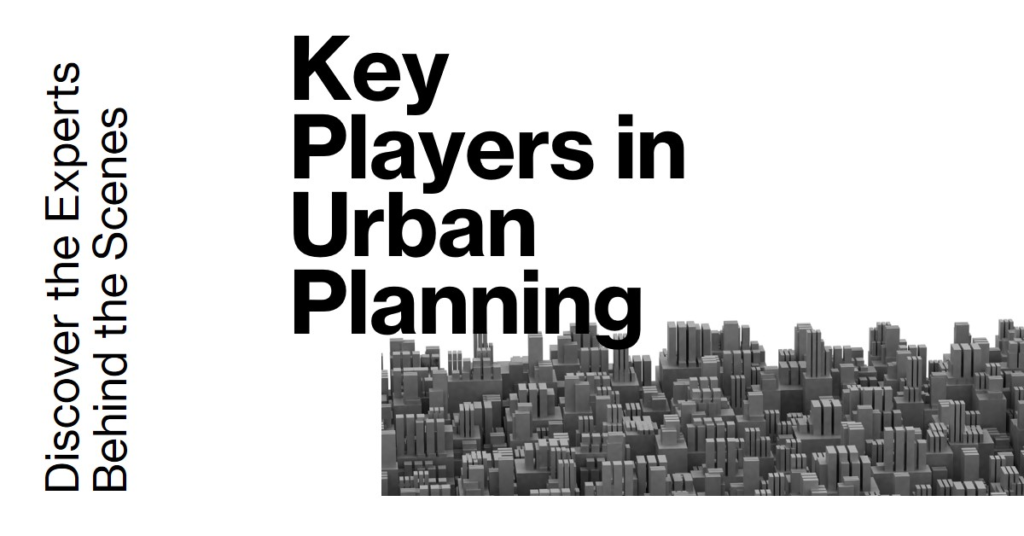
Table of Contents
- Introduction:
- City Planners: The Architects of Urban Vision
- Government Agencies: The Regulators and Enforcers
- Architects and Urban Designers: The Creators of Built Environments
- Civil Engineers: The Builders of Infrastructure
- Environmental Planners: The Guardians of Sustainability
- Real Estate Developers: The Drivers of Economic Growth
- Community Activists: The Voices of the People
- Transportation Planners: The Facilitators of Mobility
- Private Sector Consultants: The Specialists
- Academia: The Thinkers and Innovators
- Conclusion: A Collaborative Endeavor
Introduction:
Urban planning is a complex and dynamic field involving a multitude of stakeholders working together to shape the built environment. These key players range from governmental bodies to private sector firms, each contributing unique expertise and perspectives. Understanding who does urban planning is crucial for grasping how cities evolve and adapt to changing needs. In this blog post, we delve into the primary actors involved in urban planning, highlighting their roles and responsibilities.
City Planners: The Architects of Urban Vision
City planners are the cornerstone of urban planning. These professionals are responsible for developing comprehensive plans that guide the growth and development of cities and towns. They analyze data, assess community needs, and create strategic plans that balance development with sustainability.
Moreover, city planners play a pivotal role in zoning regulations, land use planning, and public policy. They ensure that developments comply with local laws and contribute positively to the community. By engaging with the public and stakeholders, city planners ensure that their visions align with the community’s needs and aspirations.
Government Agencies: The Regulators and Enforcers
Government agencies at various levels—local, state, and federal—play a significant role in urban planning. These agencies create and enforce regulations that shape land use, transportation, housing, and environmental policies. They provide the legal framework within which urban planning occurs.
Local governments, in particular, are instrumental in urban planning. City councils, planning commissions, and municipal departments work together to review and approve development projects. These bodies ensure that urban growth aligns with the city’s long-term vision and strategic goals. They also allocate funding for infrastructure projects, public services, and community amenities.
Architects and Urban Designers: The Creators of Built Environments
Architects and urban designers are integral to the urban planning process. These professionals design buildings, public spaces, and urban layouts that enhance the functionality and aesthetics of urban areas. Their work goes beyond individual structures, considering how buildings interact with their surroundings and contribute to the overall urban fabric.
Architects and urban designers collaborate closely with city planners to ensure that their designs adhere to planning regulations and meet community needs. They bring creativity and innovation to urban planning, transforming plans and policies into tangible, built environments that enrich the urban experience.
Civil Engineers: The Builders of Infrastructure
Civil engineers are crucial players in urban planning, focusing on the technical aspects of infrastructure development. They design and oversee the construction of roads, bridges, water systems, and other essential infrastructure that supports urban living. Their expertise ensures that these projects are safe, efficient, and sustainable.
Working in tandem with city planners and architects, civil engineers help translate urban plans into functional, resilient infrastructure. They address practical challenges such as traffic flow, drainage, and utility services, ensuring that urban environments can accommodate growth and development while maintaining high standards of livability.
Environmental Planners: The Guardians of Sustainability
Environmental planners bring a crucial perspective to urban planning, emphasizing sustainability and environmental stewardship. These professionals assess the environmental impact of development projects and advocate for practices that minimize harm to natural ecosystems. They integrate green spaces, promote renewable energy, and champion sustainable transportation options.
By working with city planners, architects, and developers, environmental planners help create urban environments that balance human needs with environmental preservation. Their contributions are vital for ensuring that urban growth does not come at the expense of the natural environment, promoting long-term sustainability.
Real Estate Developers: The Drivers of Economic Growth
Real estate developers are key players in urban planning, driving economic growth and development. These professionals identify opportunities for new developments, secure financing, and oversee the construction of residential, commercial, and industrial projects. They play a crucial role in shaping the urban landscape, transforming vacant land and underutilized areas into vibrant, functional spaces.
Developers work closely with city planners and local governments to ensure their projects comply with zoning regulations and align with community goals. Their investments and initiatives can stimulate economic activity, create jobs, and enhance the quality of life in urban areas.
Community Activists: The Voices of the People
Community activists and advocacy groups are essential stakeholders in urban planning, representing the interests and concerns of residents. These groups engage in public consultations, advocate for equitable development, and hold planners and developers accountable. They ensure that urban planning processes are inclusive and consider the needs of all community members, particularly marginalized groups.
By participating in planning discussions and decision-making processes, community activists help shape urban policies and projects. Their involvement ensures that urban planning is responsive to the lived experiences and aspirations of the people it serves, promoting social equity and justice.


Transportation Planners: The Facilitators of Mobility
Transportation planners focus on designing and managing transportation systems that facilitate efficient and sustainable mobility within urban areas. These professionals analyze traffic patterns, plan public transit routes, and develop strategies to reduce congestion and promote alternative transportation modes such as biking and walking.
Transportation planners work closely with city planners and engineers to integrate transportation infrastructure into broader urban plans. Their work is crucial for ensuring that cities are accessible, reducing dependence on private vehicles, and enhancing the overall quality of urban life.
Private Sector Consultants: The Specialists
Private sector consultants provide specialized expertise in various aspects of urban planning. These professionals offer services ranging from land use analysis and environmental assessments to economic impact studies and design consultations. They bring diverse perspectives and innovative solutions to complex urban planning challenges.
Consultants often work on a project-by-project basis, collaborating with city planners, developers, and other stakeholders. Their flexibility and specialized knowledge make them valuable contributors to urban planning processes, helping to navigate regulatory complexities and optimize project outcomes.
Academia: The Thinkers and Innovators
Academics and researchers in urban planning contribute to the field through education, research, and innovation. Universities and research institutions conduct studies on urban issues, develop new planning theories and methodologies, and train the next generation of urban planners. Their work advances the knowledge and practice of urban planning, providing insights that inform policy and practice.
Academics often collaborate with government agencies, non-profits, and private sector firms on research projects and pilot programs. Their contributions help bridge the gap between theory and practice, ensuring that urban planning is grounded in evidence-based approaches and informed by the latest research.
Conclusion: A Collaborative Endeavor
Urban planning is a collaborative endeavor involving a diverse array of key players. From city planners and government agencies to architects, engineers, and community activists, each stakeholder brings unique expertise and perspectives to the table. Together, they shape the urban environments that define our cities and towns, striving to create spaces that are functional, sustainable, and equitable. By understanding the roles and contributions of these key players, we can better appreciate the complexities of urban planning and the collaborative efforts required to build thriving urban communities.


